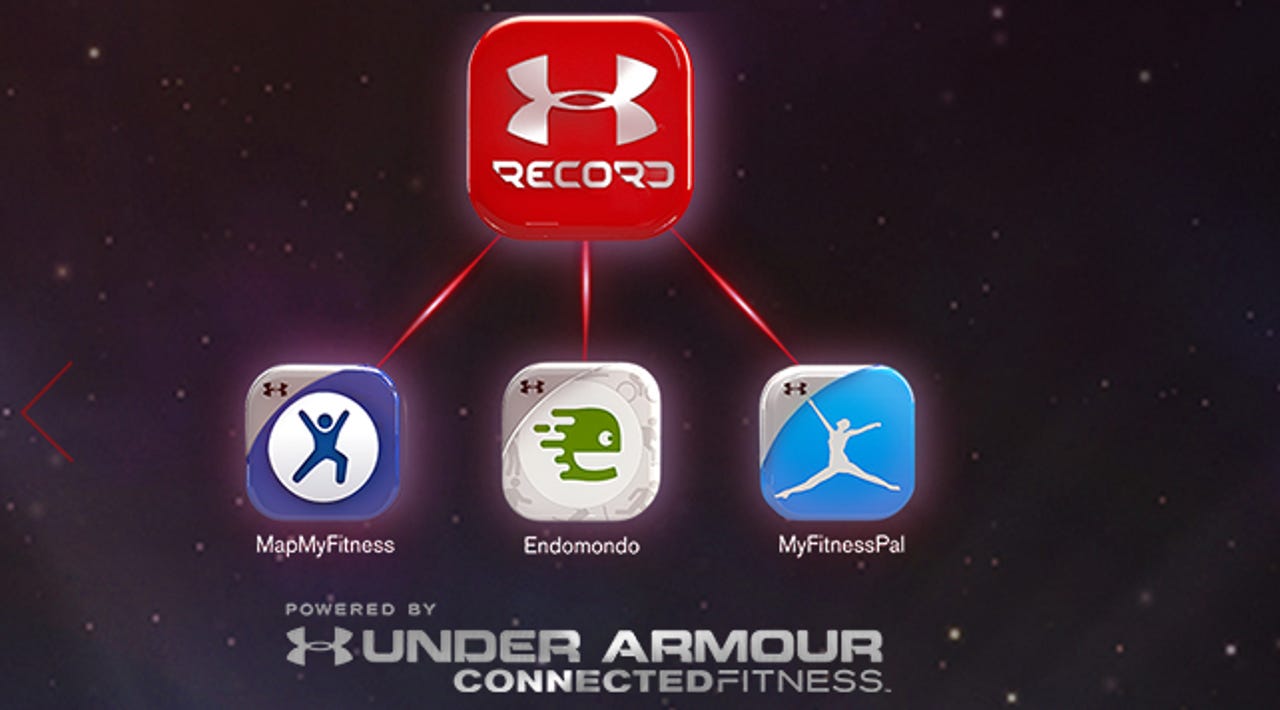Will Under Armour's big data, app experiment pay off?


Under Armour has paid $710 million for three fitness app companies, including notable entry MyFitnessPal, for a community of 120 million athletes, and one interesting big data (and likely wearable) experiment.
What remains to be seen is what value Under Armour can create from its $5.91 per athlete investment.
Tech Pro Research
On the surface, Under Armour's acquisition spree seems like a bit of a stretch. The company can claim it has the largest database of athlete behavior -- workouts, nutrition, and sleep -- but it's unclear how that'll sell more shirts, shoes, and tights. But if you step back a bit, Under Armour's strategy looks sound.
First, Under Armour, which is projecting 2015 sales of about $3.76 billion, is yet another example of how every company is a technology outfit. Under Armour's larger rival Nike also has its share of apps as well as data on performance. Every offline brand is going to have to become a digital one too. Under Armour and Nike are lifestyle brands as well as athletic performance companies. These rivals are going to have to become digital. Add it up and on you can make a dotted line between Under Armour's digital presence and marketing for its gear.
Related: How Nike thinks about app development: Lots of micro services | Under Armour buys MapMyFitness in $150 million wearable computing play
But the real win for Under Armour revolves around big data and how it will inform future product designs as well as improve athletic performance. Show me running gear that'll shave a few seconds off my personal best time, and I'm in. If that means data from MyFitnessPal -- one of my personal go-to apps -- somehow helped design that product then so be it.
Under Armour chief executive Kevin Plank outlined the connected fitness strategy. The company also has a partnership with HTC for wearables and has been building a platform to collect data. In the not-to-distant future wearables won't mean some watch-ish device. The clothes you wear will have sensors throughout them. Under Armour is going to where the big data ball will be.
On a conference call with analysts, Plank said that the management team debated a lot about acquiring MyFitnessPal and Endomondo, but had to follow the opportunity.
"At the end of the day we kept coming back to the same thing. This will help drive our core business," Plank said. "Brands that do not evolve and offer the consumer something more than a product will be hard-pressed to compete in 2015 and beyond."
What Plank sees is a data flywheel. Data from the apps give Under Armour design cues. Athletes' habits will influence design. The acquisitions will position Under Armour well as the worlds of technology and health and fitness intersect, Plank said.
Here's a quick scan at the app arsenal Under Armour has amassed:
- One out of every five people in the U.S. has downloaded an app in the Under Armour network.
- 57 percent of registered users are in the U.S. with the remainder around the world.
- 72 million women are registered on the Under Armour platform. That fact is huge since Under Armour has been trying to reach women to sell more apparel.
- Three entrepreneurs who have led the connected fitness charge.
- 300 engineers working on Under Armour's digital strategy.
The challenge
Plank spoke of all the ideas he has on his whiteboard and how Under Armour is focused on growth. The app frenzy revolves around big ideas and growth. However, the company still has to sell a lot of apparel. "Don't forget to sell shirts and shoes," Plank reiterated.
What's smart about Plank's approach is that he's largely letting his acquisitions run as is without relocating them. Presumably these acquisitions will all be tied together to UA Record, another fitness tracking platform, and grow on their own over time.
Should these acquisitions become a distraction, then Under Armour's core business could suffer.
Those challenges are obvious today. But perhaps the biggest challenge is how Under Armour is going to manage all that data and find a way to use it. After all, Under Armour via the purchase of MyFitnessPal knows I generally eat about 48 percent carbs a week with 28 percent protein and the remainder fat. How exactly is that information going to get me to drop my Nike Pro Combat winter training shirt for Under Armour's Cold Gear?"We can offer a full suite of information activity of workout tracking as well as nutritional expertise to truly make all athletes better," Plank said.
How will that sell me a shirt, which usually goes for a premium price? Plank's base argument is that people who are more active buy more gear. Under Armour's apps help make people more active.
If Under Armour's digital strategy only results in more sales and marketing engagement, the acquisitions could be viewed a success.
However, Plank is thinking bigger. Plank talked about how biometric sensors will be in gear and such an effort has been tried at the NFL Combine. The combination of real wearables -- clothing with embedded sensors -- and a data platform could be powerful assuming Under Armour figures out what to do with all that data it has acquired. For these acquisitions to be transformative, Under Armour will need to connect its data to its innovation lab and ultimately to the products it sells.